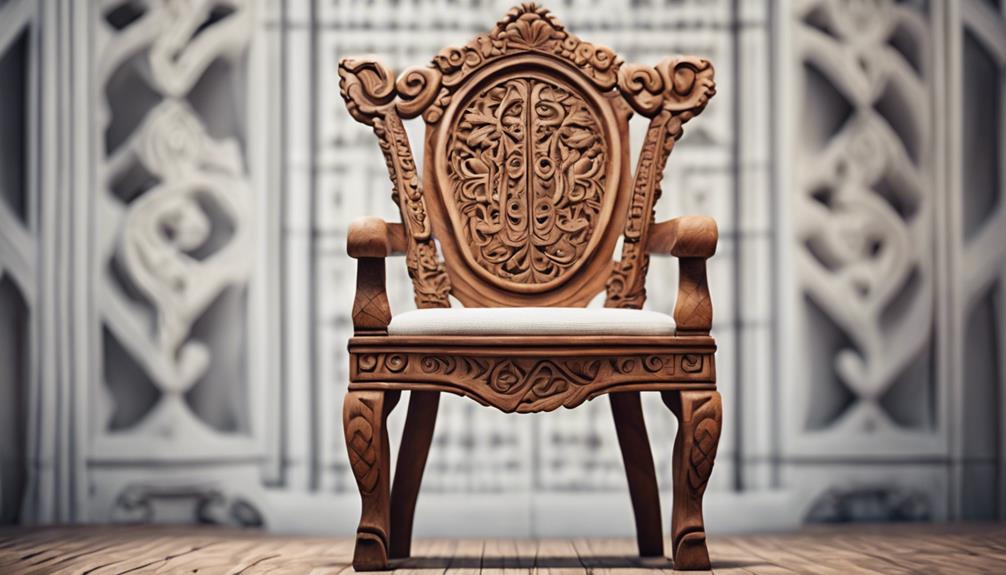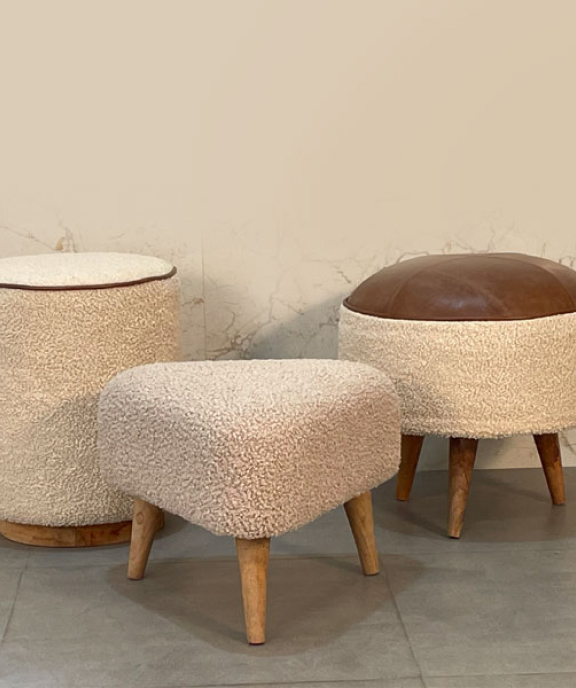Explore the symbolism in wooden furniture design, revealing cultural heritage, historical importance, and skilled craftsmanship.
Different woods like teak, sandalwood, and mango represent endurance, tranquility, and new beginnings.
Discover common symbols of stability, connection to nature, and attention to detail.
Regional variations and renowned examples highlight diverse cultural influences and craftsmanship.
Each detail in wooden furniture conveys a unique story, unveiling the world of symbolic design.
Cultural Significance
Incorporating wooden furniture designs that symbolize cultural significance adds depth and meaning to interior spaces. Historical influences and artistic interpretations play a crucial role in shaping the designs of furniture pieces, reflecting the rich heritage and traditions of different cultures.
Teak wood symbolizes endurance and resilience in Indian culture, bringing elegance and durability to furniture designs. Sandalwood promotes tranquility and creates a serene environment. Sheesham (Indian Rosewood) represents longevity and prosperity, infusing warmth and richness into interior aesthetics.
These cultural symbols add layers of meaning to furniture pieces, transcending mere functionality to tell stories of tradition and heritage through artistic craftsmanship.
Materials and Techniques
Diverse materials and innovative techniques enhance the appeal and functionality of wooden furniture designs. Artistic finishes and traditional carving techniques elevate the visual appeal of furniture with intricate details and cultural significance.
Sustainable practices and technology play a vital role in modern furniture design, promoting eco-friendly materials and efficient production processes. Teak wood is known for its durability, symbolizing endurance and resilience in furniture design.
Sandalwood holds spiritual significance in Indian culture, creating a serene environment. Sheesham (Indian Rosewood) represents longevity and prosperity, enriching interior spaces with warmth and richness.
Mango wood symbolizes new beginnings and growth, blending modern aesthetics with traditional symbolism. Bamboo, symbolizing flexibility and sustainability, is essential in Indian design and architecture, aligning with modern interior design trends.
Incorporating these materials and techniques in wooden furniture designs showcases craftsmanship and conveys deeper meanings and cultural values.
Common Symbols
Wooden furniture design commonly embodies timeless symbolism associated with stability, connection to nature, and craftsmanship. This symbolism extends beyond functionality to convey deeper meanings and evoke specific emotions.
Common symbols in wooden furniture design include spiritual connections to nature, showcasing artistic expressions through intricate carvings, symbolizing various concepts such as strength or growth through different wood types and finishes, reflecting cultural and historical influences, and symbolizing dedication, attention to detail, and the pursuit of excellence in craftsmanship.
Regional Variations
Regional variations in Indian furniture design showcase diverse cultural influences and craftsmanship techniques. Historical influences and regional preferences shape unique styles of wooden furniture across India.
Artistic carvings and intricate details highlight skilled craftsmanship. Color combinations evoke specific moods or reflect regional traditions.
A breakdown of regional variations in Indian wooden furniture design includes Rajasthan with intricate floral motifs and vibrant hues, Kerala with nature-inspired designs and earthy tones, and Punjab with geometric patterns and bold colors.
These distinct preferences in artistic carvings and color combinations underscore the diversity and richness of Indian wooden furniture design, enhancing the cultural significance of each piece.
Famous Examples
When exploring famous examples in furniture design, we encounter intricate mechanisms and hidden compartments that bring mystery and sophistication to these pieces. Historical context and artistic intricacies reveal the genius behind iconic features and hidden meanings in renowned furniture designs.
Notable examples include the 18th-century English Secrétaire with a hidden compartment accessed by removing a drawer and pulling on an oak fillet, the French Exhibition Mechanical Secrétaire by Daubet & Dumarest with secret compartments revealed by turning a single key, a Victorian-era oak bookcase with hidden compartments disguised as doors opened by levers and buttons, secret drawers concealed in the base plinth and top of the French exhibition secrétaire, and the mechanical reveal of hidden compartments in the French secrétaire enhancing its design and functionality.
These examples demonstrate how furniture design can cleverly combine practicality with artistry, leaving a legacy of craftsmanship that continues to inspire.
Conclusion
Upon reflection of the intricate symbolism within wooden furniture design, we uncover a deep appreciation for the craftsmanship and heritage embedded in each piece.
Exploring symbolic connections in wooden furniture reveals a tapestry of meanings beyond mere functionality. The stability, tradition, and connection to nature in wooden furniture convey a sense of timelessness and historical rootedness.
The durability, warmth, and comfort in wooden furniture design evoke feelings of security and homeliness.
Frequently Asked Questions
What Does Wood Symbolize in Interior Design?
Wood in interior design signifies durability, strength, and a connection to nature. It conveys natural warmth and earthy elegance, fostering harmony and stability. Different types of wood carry distinct meanings, infusing spaces with tradition, comfort, and expert craftsmanship.
What Are the Theories of Interior Design?
Interior design applies principles such as balance, harmony, contrast, and emphasis to create aesthetically pleasing and functional spaces. These theories help in organizing colors, textures, and spatial elements to achieve well-designed environments.



